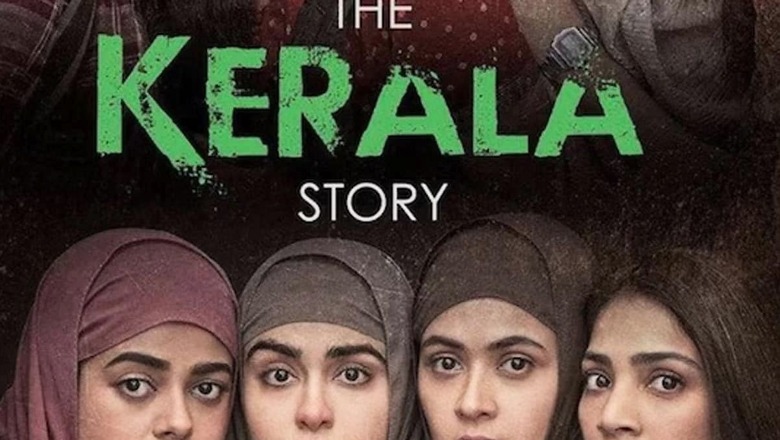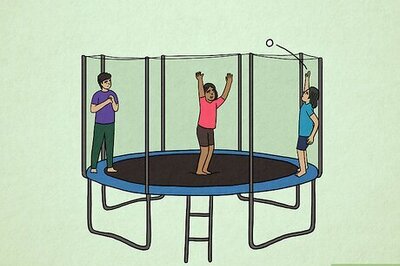
views
I am against the culture of banning, be it films, books, exhibitions or anything else, unless the reasons are absolutely and verifiably compelling. This is not because I approve of what is being banned. Nor do I believe that every creation that claims to be authentic is anywhere near the truth. I am quite aware that very often, mass forms of communication are used for false propaganda, and that creativity is a facade for hidden agendas, mostly political.
However, I believe that banning is counterproductive. It defeats the very purpose for which it is imposed because, in today’s age of social media and cyber accessibility, nothing can be prevented from being seen. When you ban a film, for instance, you attract more attention to it, and more people want to watch it, and they can. The recent decision of the government to block the BBC documentary on Gujarat proves this point. Much fewer people would have watched it had it not been clumsily blocked. Besides, there is something undemocratic in allowing the state to decide what people should watch or read. It undermines, even insults, the innate wisdom of the common person, who usually is quite adept in knowing the difference between truth and falsehood, agenda and fact, propaganda and reality.
The above comments are, as you must have guessed, in the context of the controversy surrounding Sudipto Sen’s film The Kerala Story. The West Bengal government has banned it. The filmmakers have appealed against the ban in the Supreme Court, and the verdict is awaited. Other states like Kerala and Tamil Nadu have opposed it. On the other hand, the state governments of UP, Madhya Pradesh and Gujarat have made it tax-free. We now have a situation where some parts of India don’t want people to see the film, while others want people to see it, and both these diametrically opposite decisions are made by elected representatives of the people. If this ludicrous situation does not make a film a hit, I don’t know what does!
Obviously, the film serves the political purposes of the Bhartiya Janta Party (BJP), whose state governments have made it tax-free. The BJP, its critics say, derives its political strength from Hindu consolidation, and therefore, wants to highlight the threat posed by Muslims in general and radical Islam in particular. Their purpose is best served if more people (read Hindus) watch the film. Those opposed to the film, apprehend that it is propagandist, Islamophobic, and inaccurate, and can cause avoidable social hatred and divisiveness.
The film’s intention is to highlight the dangers of radical Islam, by focusing on how Hindu girls become victims of ‘love jihad’, convert to Islam, and join the dreaded ISIS. But in conveying this message, does the film cross the line between understandable messaging and deliberate hate-mongering? Having watched the film, I believe it does. There is an extremist fringe in every religion, which needs to be exposed and dealt with firmly. But when a film, whether deliberately or otherwise, has the effect of demonising an entire community, it is likely to spread hatred, and reinforce a generic stereotype which is far from the truth.
It is one thing to put the torchlight on some cases of radicalisation, and quite another to exaggerate the figure to create fear that this has become a widespread or pervasive menace. One of our domestic staff told my wife that her relatives had warned her to be especially careful about her daughters since young Muslim men everywhere are trying to convert them to Islam through ‘love jihad’ to join the ISIS. The reality is that India, with the third largest number of Muslims in the world, has a minuscule number of people who have actually joined ISIS. Experts from the Observer Research Foundation note that less than 200 people from India had joined ISIS and that Kerala, having over 9 million Muslims, accounted for only a quarter of these.
The quality of the film also leaves much to be desired. Most critics have decisively panned the film, equating it with a ‘lengthy WhatsApp forward’, manufactured by those who see a fanatic in every Muslim. Others have equated it with inept propaganda, that is neither watchable nor convincing. The problem is that generalising an entire narrative from a few stray incidents has the potential of misleading people.
Suppose, for instance, an entire narrative was made about Hindus based on the hatred spewed at the so-called Dharma Sansad at Haridwar in December 2021, would it not be motivated propaganda? But, for all its faults, I am still against the banning of the film, as I am against making it tax-free. People should have the right to see it, if they wish to, on a level playing field and come to their own opinion. That is why I was against the banning of Salman Rushdie’s Midnight’s Children, and all such similar bans in the past. My views concur exactly with the brave judgement delivered by Justice Sanjay Krishna Kaul of the Supreme Court in 2016 on behalf of a five-judge bench. The case was about banning the book, Mathorubhagan by celebrated Tamil writer Perumal Murugan (translated into English as One Part Woman). There were calls by some zealots to ban the film, and Justice Kaul put a decisive lid on them. He began his judgement by quoting the famous words of Voltaire in defence of free speech: “I may not agree with what you say, but will defend to death your right to say it”, and concluded with the ringing words, “The choice to read is with the reader. If you do not like a book, throw it away…Yet, the right to write is unhindered.”
The same logic applies to The Kerala Story. But we should never doubt the wisdom of the people of India to know the difference between truth and propaganda. The BJP used this film as part of its campaign in the recent elections in Karnataka. The results clearly show how much impact this had.
The author is a former diplomat, an author and a politician. The views expressed in this article are those of the author and do not represent the stand of this publication.















Comments
0 comment